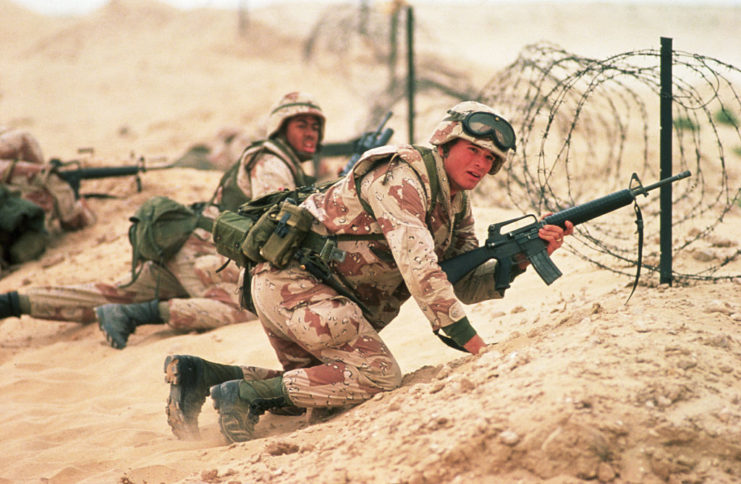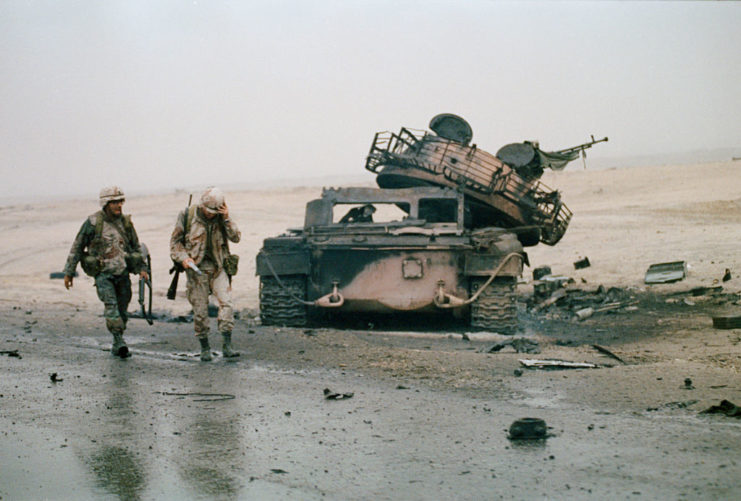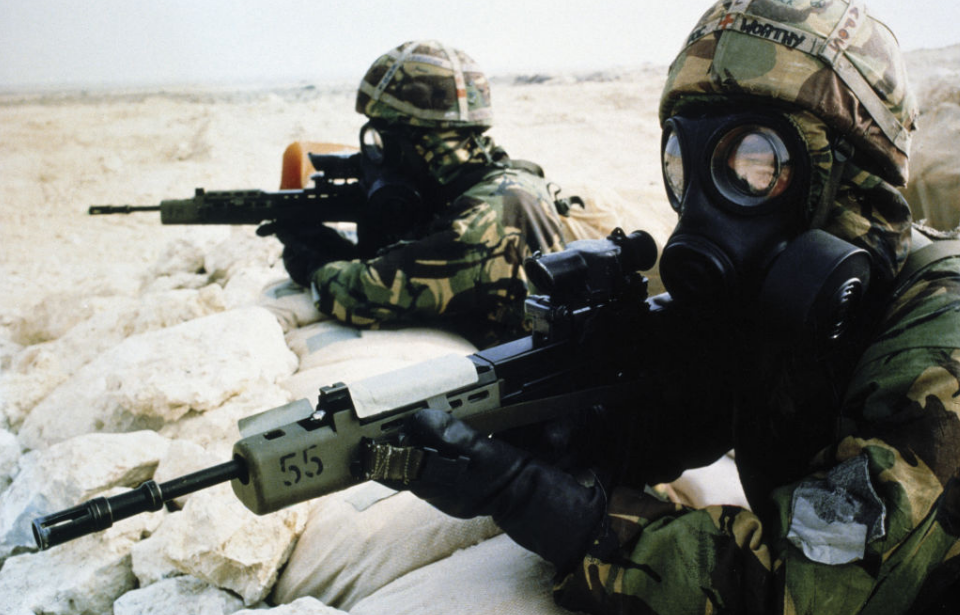After over 30 years of not understanding the cause of Gulf War Illness, veterans of the Persian Gulf War appear to finally know why they continue to experience a wide array of chronic symptoms, including fatigue and muscle pain. According to a new study published in journal Environmental Health Perspectives, the cause was the use of sarin nerve gas in the Kuwaiti Theater of Operations.

Gulf War Illness, also known as Gulf War Syndrome, is a chronic disorder affecting a large number of veterans who served in the Persian Gulf from 1990-91. It’s characterized by a number of symptoms, with the severity differing from person to person. It’s estimated that 250,000 of the 697,000 US veterans to serve in Kuwait are suffering from the disorder, while the Royal British Legion suggests it affects 33,000 UK Gulf War veterans.
Despite the prevalence of the illness, researchers have never been able to concretely determine its cause, with many assuming it was a psychological disorder. There was also a belief it was caused by exposure to depleted uranium, but that was disproven in early 2021.

The study, published in the journal Environmental Health Perspectives on May 11, 2022, confirms the illness was caused by exposure to chemical warfare agents during the Gulf War – in particular, sarin, a manmade nerve gas. Odorless, clear, tasteless and colorless, sarin is difficult to detect. It was initially developed by the Germans in 1938 as a pesticide.
Prior to and after the Gulf War, Iraqi President Suddam Hussein stockpiled the nerve gas. According to the CDC, “all nerve agents cause their toxic effects by preventing the proper operation of an enzyme that acts as the body’s ‘off switch’ for glands and muscles. Without an ‘off switch,’ the glands and muscles are constantly being stimulated.”

The study, which was led by Dr. Robert Haley, a professor of internal medicine and the director of the Division of Epidemiology at the University of Texas, Southwestern Medical Center, came to its conclusion after studying a group of 1,016 Gulf War veterans. Of those, 508 surveyed had developed symptoms of Gulf War Illness following their service, while the other half hadn’t.
Blood and DNA samples were collected, and each veteran was asked if they’d heard nerve gas alarms during their deployment – and how often.
After thorough analysis, those conducting the study found that those veterans who were exposed to sarin were more likely to develop the illness, particularly if they had a weaker variant of the PON1 gene. PON1 plays a role in breaking down toxic agents in the body, and there are two variants of the gene: Q, which generates an enzyme that breaks down sarin, and R, which is not efficient enough to break down the nerve agent, but can destroy other chemicals.
According to SciTechDaily, everyone carries two copies of the gene, either RR, QQ or the QR genotype.

Those veterans with the QR genotype and who heard nerve agent alarms were 4.43 times more likely to develop Gulf War Illness, while those with the QQ genotype saw their chances increase by 3.75 times. Those with the RR genotype had it worst, with their chances of developing the illness increasing by 8.91 times, while those with the genotype and low-level exposure were over seven times more likely to become sick.
According to Military.com, it’s likely thousands of coalition troops – including those serving with the US Armed Forces – were likely exposed to sarin and the organic phosphate cyclosarin when they destroyed a bunker at the Khamisiyah Ammunition Storage Depot. Located in southern Iraq, the bunker was housing chemical weapons, which, when destroyed, created a plume that spread over a 25-mile radius.
The Department of Veterans Affairs estimates some 100,000 servicemen could have been exposed to low levels of the nerve agents.

Gulf War Illness has been a source of controversy over the decades. In 1997, a Congressional investigation found the VA had little interest in finding the cause of the disorder and instead blamed its symptoms on stress and other mental health issues.
More from us: Here’s How Much US Troops Were Paid In Every War
The report by the Committee on Government Reform and Oversight went so far as to say the VA and the Department of Defense were “plagued by arrogant incuriosity and a pervasive myopia that sees a lack of evidence as proof” that Gulf War Illness didn’t exist, despite the overwhelming evidence of symptoms.
